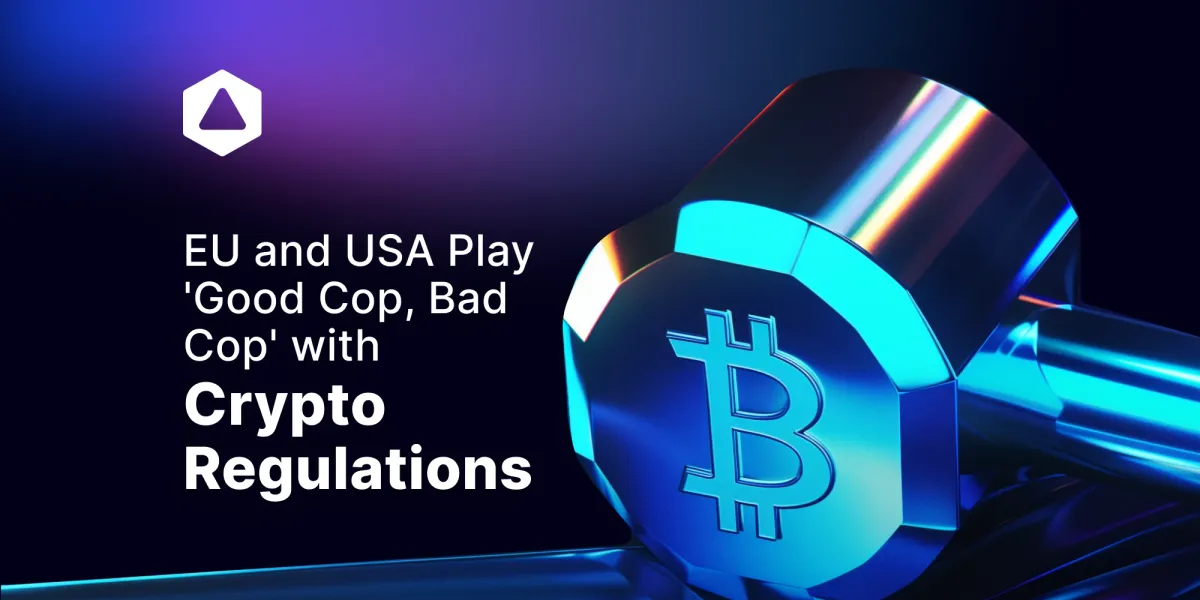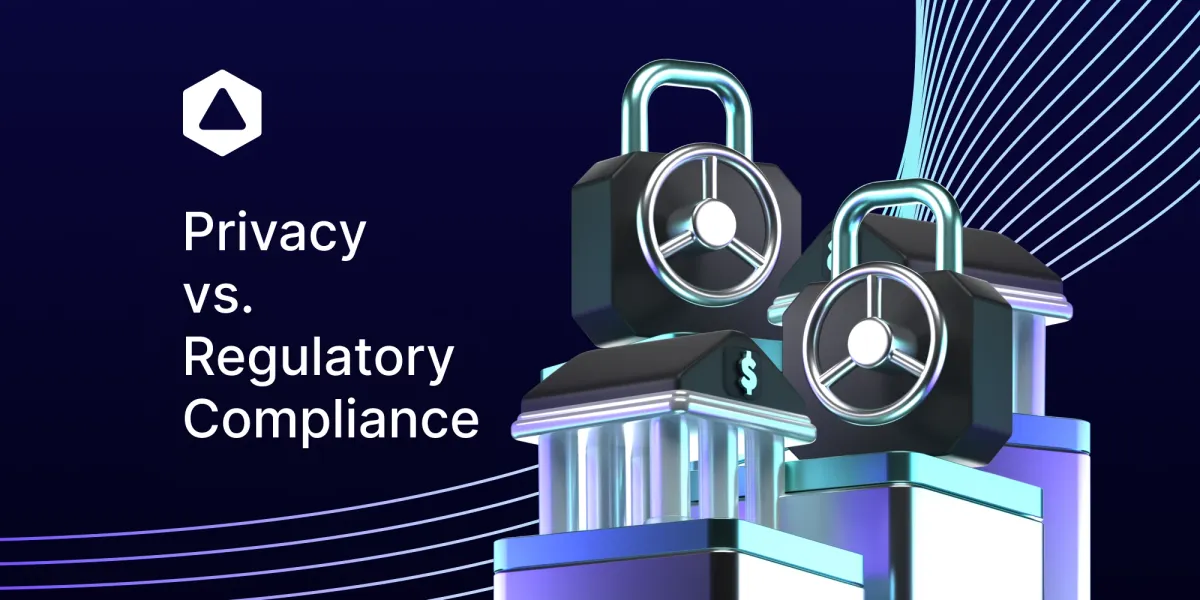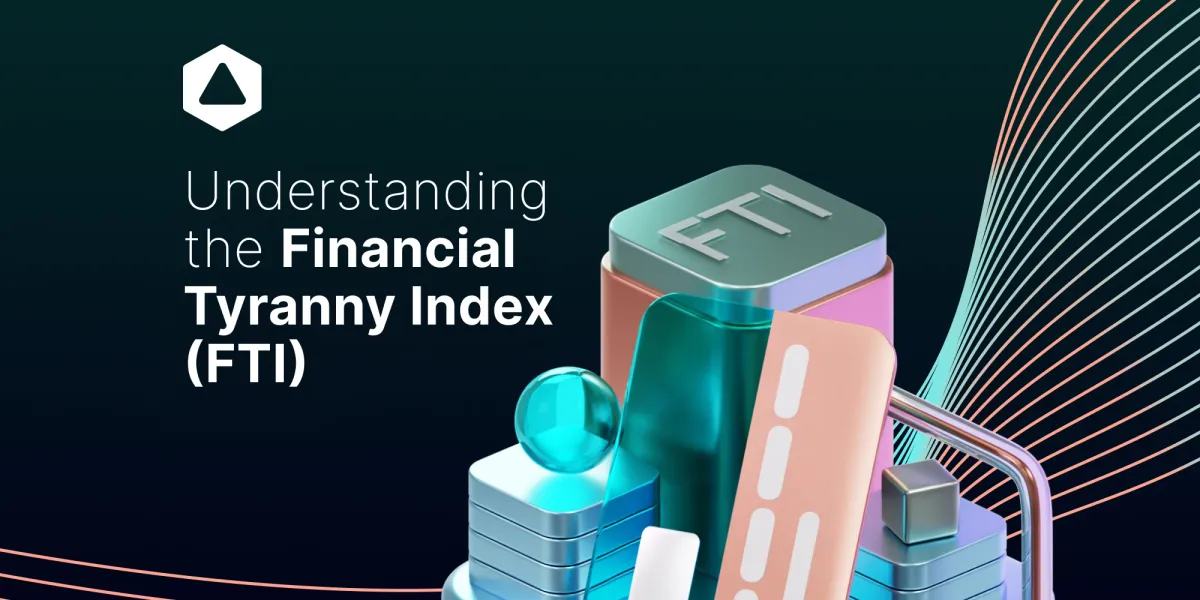EU and USA Play 'Good Cop, Bad Cop' with Crypto Regulations
Explore the latest EU regulations on anonymous crypto transactions and how they impact self-custody wallets. Discover what the American regulatory landscape holds for crypto and how businesses need to adapt.

The European Union has taken a bold step in the fight against money laundering with the introduction of new regulations this month. Are these regulations as bad as we think they are, or is this just sensational clickbait trying to stop crypto from going parabolic? On top of that, we take a look at the American situation where regulators are still doing their best to keep it as vague as possible.
EU Crypto Regulation What We Really Know
The EU has implemented a ban on anonymous crypto transactions through self-custody wallets. This move is part of a broader strategy to combat anti-money laundering activities within the financial sector, which is a crime.
The legislation specifically targets unidentified transactions through service providers' wallets. Think of self-custodial wallets and such. By doing so, the European Union imposes new rules that service providers must follow when handling cash and crypto payments.
The overarching goal of the new rules is to enhance financial transparency and security, in essence trying to have control in a world where digital transactions are becoming the norm.

A Crypto-Specific Regulation?
The anti-money laundering regulation is not a crypto-specific regulation. It's a broad anti-money laundering and counter-terrorism financing (AML/CFT) framework that applies to various institutions termed "obliged entities" (OEs), which include financial institutions such as crypto-asset service providers (CASPs), as well as non-financial entities like football clubs or other gambling services.
Exclusion of Self-Custody Wallets
Our first thought reading these headlines was, ‘Oh boy, my self-custodial wallet is illegal.’ This is blatantly wrong. By doing more thorough research we see that the European AMLR explicitly excludes obligations for providers of hardware and software or providers of self-custody wallets that do not have access or control over the crypto-assets, such as Metamask and Ledger. We are safe for now...

AMLR and Crypto-Asset Service Providers (CASPs)
CASPs regulated under the Markets in Crypto-Assets (MiCA) will need to follow standard KYC/AML procedures like customer due diligence (CDD), which is not new since EU crypto exchanges and custodial wallet providers have already been doing this. Perhaps you have seen recent changes when using centralized exchanges in the previous year.
Prohibition of Anonymous Accounts or Privacy Coins
The new AMLR implications explicitly prohibit CASPs from providing anonymous accounts and accounts for privacy coins. This aligns with existing AML rules and business practices, including delistings already observed globally, not just in the EU. So privacy coins can not be found on the regulated exchanges as well as the creation of non KYC accounts.

Risk-Mitigating Measures
On top of that they require "risk-mitigating" measures, which could include the use of blockchain analytics or the collection of additional data about the origin or destination of the crypto-assets, in line with the EU's Transfer of Funds Regulation (TFR). This makes it easier for law enforcement to track the source of criminal funds.
Merchant Payments in the EU Involving Cryptocurrency
What is important is that the rules for cash and the limits on their transactions will be used by the new AML regulations. And with a maximum of €10,000, EU member states have the authority to adopt lower limits if they choose, which is considered unfavorable by some.
Interested in learning more about crypto-friendly countries? Check out our article here!

Also for Self-Custody Wallets?
You can still use your self-custody wallets for purchasing goods and services in the EU without any restrictions, as previously proposed limits have been removed in the final version. So this makes your self-custodial wallet not illegal as stated in many articles.
CASP and Merchant Payments
If you opt to use a CASP for buying goods and services with crypto, even for occasional transactions, the CASP will need to perform customer due diligence on you. This includes verifying your identity and potentially additional KYC/AML measures if the transaction exceeds €1,000.
The €1,000 limit mentioned in the EU AML regulations refers to a per-transaction basis. This implies that individuals can perform multiple transfers of up to €1,000 each, potentially several times within a single day or week.
This could be troublesome for native crypto users that are used to having no restrictions when transacting their crypto. But this will depend on each of your preferences of course.
The American Side of The Coin
The current regulatory environment in the Americas is still unclear, with agencies that control certain parts of the market regulations opposing one another directly. Various agencies, each with their own set of concerns and regulatory frameworks, play a part in shaping the ecosystem.

US "Crypto Cops"
In the United States, several agencies have taken an interest in the cryptocurrency ecosystem. Key players include:
- The Securities and Exchange Commission (SEC): The SEC has been vying for jurisdiction over various crypto matters and has been active in enforcement cases.
- The Commodity Futures Trading Commission (CFTC): The CFTC also claims jurisdiction over certain aspects of the cryptocurrency market.
- The Treasury Department: Within the Treasury, the Office of Foreign Asset Control (OFAC) and the Financial Crimes Enforcement Network (FinCEN) regulate anti-money laundering (AML) and counter-terrorism financing within financial institutions, including some crypto companies.
- The Federal Reserve and Banking Agencies: These bodies have recently become more involved in cryptocurrency regulation.
With the SEC and CFTC grappling with jurisdictional issues, particularly in defining whether a coin is a security or a commodity, all that regulation around terrorist financing, sanctions evasion, and consumer protection did not save investors from the FTX collapse, au contraire.

This lack of clarity has significant implications for trading and custody of crypto assets. What we do know is discussed below.
How Has the Approach to Crypto Regulation Evolved?
Over the years, the approach to crypto regulation has evolved significantly. Nine years ago, there were only a few meetings on Capitol Hill to educate members about blockchain. Today, there are hearings almost every week, specialized digital asset subcommittees, and staff exclusively focused on crypto, which indicates a growing understanding and interest in the space.
The Corporate Transparency Act and Small Businesses
Similar to MiCA regulations in the European Union, Americans have to follow the Corporate Transparency Act, effective from 2024, which has increased the burden of disclosure and compliance for nearly all small businesses in the United States.
The Corporate Transparency act requires businesses to provide more detailed information about their ownership and control structures, aiming to prevent money laundering and the financing of terrorism.
For Web 3 founders, it is important to understand these new reporting requirements and ensure that their businesses are in full compliance to avoid potential penalties. That is also for DAO's.

Reporting Requirements for Crypto Transactions Over $10,000
Businesses that receive crypto valued at more than $10,000 in a single transaction or related transactions must file Form 8300 with the IRS within 15 days, similar to cash reporting requirements.
The definition of "one transaction" covers all transactions between two parties within 24 hours, and "related transactions" include all transactions between parties within a 12-month period. Failing to report such transactions can result in significant penalties, both civil and criminal, including fines and possible imprisonment in the worst cases.
Penalties for Non-Compliance
Failing to report accurate beneficial ownership information can result in fines of up to $10,000 and imprisonment of up to two years. Misusing the reported information, although not clearly defined, carries even stiffer penalties, including fines of up to $250,000 and imprisonment for up to five years.😯
Understanding the Stablecoin Legislation
In July of the previous year, the Financial Services Committee passed the "Stable Coin Bill" which aims to establish a framework for both the federal and state governments. This framework would allow companies to issue stablecoins—those backed by reserves are usually custodied in banks.

The focus is on centralized issuers, providing them with a variety of options and pathways to create a federal framework, rather than having to navigate the regulatory landscape on a state-by-state basis. But this bill did not pass of course, but maybe it will this year with the upcoming American elections.

Potential Outcomes of the Upcoming Election
The upcoming election has the potential to significantly affect regulation and lawmaking, particularly if there is a change in administration. New heads of regulatory agencies, appointed by the president and confirmed by the Senate, could shift priorities.
These changes might result in a different approach to enforcement, either through increased guidance or continued reliance on court cases to set precedents.
The Role of Bipartisan Support in Cryptocurrency Legislation
Interestingly, the success of cryptocurrency legislation is less about who controls the White House and more about bipartisan cooperation. To pass legislation, a party in Congress requires not just a simple majority, but also a supermajority in the Senate, which is highly unlikely for any one party to achieve. This necessitates at least some support from minority members in the Senate, regardless of the presidential administration.
Trump On Bitcoin
Frustration Around Crypto Legislation
The approach of US regulators toward crypto varies, with some being more knowledgeable about the technology than others. State regulators, for instance, often have a deeper understanding of crypto than federal regulators. In some cases, federal regulators may lack basic technical knowledge, such as not knowing what an API is, which can lead to a significant knowledge gap and misguided regulatory decisions.
The politicization of cryptocurrency regulation has been particularly frustrating. There is a sentiment that regulators have sometimes acted outside the bounds of the law, leading to legal challenges where the courts have often sided with the industry due to overreach by regulators.
Compliance of Bitfinity
Bitfinity that makes use of the Internet Computer is straight with any laws and regulations imposed by the European lawmakers. The introduction of a European subnet on the Internet Computer that is designed to comply with the General Data Protection Regulation (GDPR) is a significant step towards building trust and enhancing the reputation particularly in the European market.
By allowing developers to create decentralized applications (DApps) and bridge the smart contract capabilities to the Bitcoin network, not only are privacy regulations respected, but users will be safe to use self-custodial wallets within the ecosystem.

This proactive approach to submitting to the Markets in Crypto Assets (MICA) framework proposed by the European Commission showcases more than just dedication to regulatory compliance and a long term commitment in the crypto space.
Conclusion
Looking ahead, the consensus among industry experts is cautiously optimistic. Within the next five years, there is an expectation for legislation that provides a legal framework for the crypto markets in the United States.
At the other side of the planet we see that new implementations of regulations are not to be frightened of as expected. We see that the final compromise text of the AMLR does not signify a ban on self-custody payments, wallets, or P2P transfers.
The industry can breathe a sigh of relief as the AMLR will have a minimal impact on crypto in the EU, contrary to the fears spread by some prominent crypto Twitter accounts and media outlets. The AMLR is set to pass final approval and will come into effect three years after its publication, approximately in Summer 2027. However, if you think that was the end game, you're greatly mistaken. They are just dipping a toe in to test the waters...

Connect with Bitfinity Network
Bitfinity Wallet | Bitfinity Network | Twitter | Telegram | Discord | Github

*Important Disclaimer: While every effort is made on this website to provide accurate information, any opinions expressed or information disseminated do not necessarily reflect the views of Bitfinity itself. The information provided here is for general informational purposes only and should not be considered as financial advice.



Comments ()